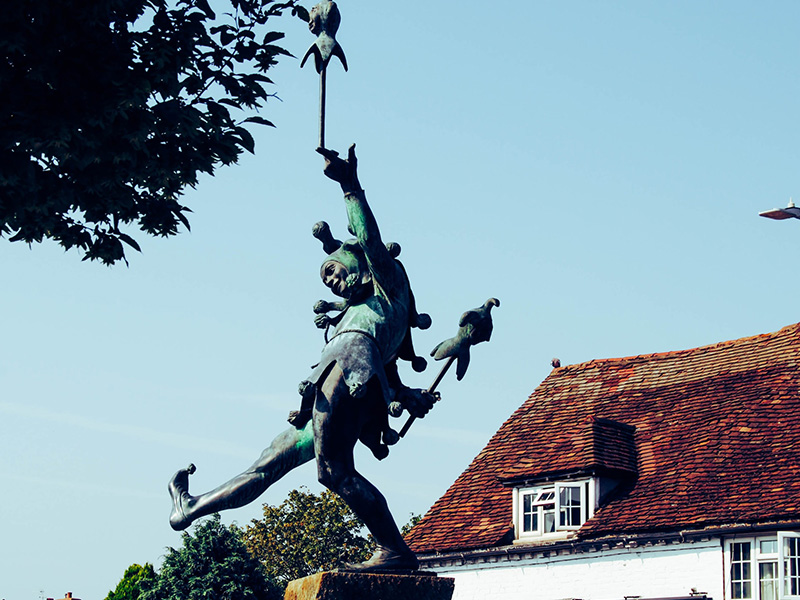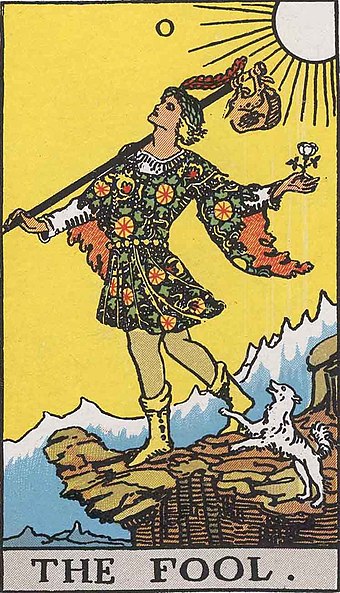A fool, a fool. I met a fool i’ the forest,
A motley fool.
(Jaques, As You Like It, Act 2 Scene 7)
If we say “that person is a fool” we generally mean silly or stupid, which is a dictionary’s definition, followed by “a person who lacks judgment or sense.” Such a person is not to be taken seriously, and is not viewed as a threat … a person who can be ignored. An idea or strategy can be labeled “foolish” and so ignored. If it gains strength to prevent any taking away of power from their current winning position The Powers In Charge will begin a propaganda campaign. Some industries provide good examples of years of propaganda and bribes: tobacco, oil, pharmaceuticals.

Motley Fool, Photo Credit: Rachel Lo, Unsplash
In Shakespeare’s play King Lear, those who oppose the Arrogant Powers in Charge are banished on pain of death. They go to live on the Moor, a large, open marsh land. They are poor fools living outside of the social/political structures (and issues). They have themselves, the clothes on their back, their skills. As fools they are no threat, and so ignored. They survive.
Out on the Moor the Fool characters serve as Nets, catching the broken and mad, and protecting them. They also link with each other in the common cause of helping all to survive the situation.
Motley Fools
Shakespeare creates King Lear’s Fool as a traditional character role recognized in his culture – the Motley Fool. The word means “parti-colored, multicolored, variegated, polychromatic; pied, piebald, mottled, dappled.” Fools dress in motley so there will be no mistaking their role. In both court and common life the task of the Fool is to point out the truth in any situation. (They were licensed and protected by decree.) When King Lear can no longer tolerate the Fool’s truth, he banishes him.
Characteristics of Motley Fools

The Rider-Waite Tarot Fool: Zero
Wikipedia: In the Rider–Waite deck and other esoteric decks made for cartomancy, the Fool is shown as a young man, walking unknowingly toward the brink of a precipice. In the Rider–Waite Tarot deck, he is also portrayed as having with him a small dog. The Fool holds a white rose (a symbol of freedom from baser desires) in one hand, and in the other a small bundle of possessions, representing untapped collective knowledge.[5]
In the Tarot, the Fool is ZERO – outside both the numbered major arcana (22 cards) and minor arcana (56 cards). The Zero Position is outside the rest of the deck. The Fool is free to take the open road, to be unconventional, to be and act outside of societal expectations. There is no arrogance in the Fool’s choice – no, “I’m better than you.”
Out beyond ideas of wrongdoing and right-doing,
there is a field. I’ll meet you there.
Rumi – translated by Robert Bly
Questions around being a Tarot Fool:
- How to reach a Zero state of neutrality, revealing the situation without a positive or negative judgment?
- How to be in a Zero state with family members, friends, enemies, acquaintances?
- How to keep a sense of humor and invite others to share my Foolishness?
- How can we be ready to take the Open Road?
One secret is to “have our bag packed”:
- If our resume is up to date, and we go for an interview now and then, we know we can take to the open road when we are compromised.
- If I know I can live alone and be happy, I am free to leave an impossible relationship behind.
- If we’ve been in the wilderness before and made it through, we learned survival skills. We know we can go into another wilderness and figure out how to make it through.
Heyóka Fool: Mirror
The Heyóka Fool figure comes from the Lakota and Dakota (Sioux) people of the Great Plains of North America. The role of this fool is to be and do everything backwards, the opposite of the conventions being observed by the surrounding cultural group. My husband was asked to play this role at the Minnesota Men’s Conference. He says it is one of the great honors of his life. Our two sons were with him, helping him dress with his clothes backwards, walk and roll his wheelchair backwards, sit with his back to the speaker and the audience… in every way break the expected conventions of the moment.
The Heyóka’s intended result is to crack things open. They say what others are afraid to say, and ask questions that if answered would reveal truth. People are pushed to think about who, what, how, why things are the way they are, and look at a situation differently.
…. sacred clowns serve an important role in shaping tribal codes. Unbound by societal constraints, heyókȟa are able to violate cultural taboos freely and thus critique established customs.[5] Paradoxically, however, by violating these norms and taboos, they help to define the accepted boundaries, rules, and societal guidelines for ethical and moral behavior. They are the only ones who can ask “Why?” about sensitive topics; they use satire to question the specialists and carriers of sacred knowledge or those in positions of power and authority. —John Fire Lame Deer
This quote is from the very personal Wikipedia article about the Heyóka. John Fire Lame Deer continues:
For people who are as poor as us, who have lost everything, who had to endure so much death and sadness, laughter is a precious gift. When we were dying like flies from white man’s disease, when we were driven into reservations, when the government rations did not arrive and we were starving, watching the pranks and capers of Heyóka were a blessing.
How to be a Mirror, a Truthteller through Humor, through Example? How to reveal what’s happening without judgement?
The great Christian Fool St. Francis of Assisi suggests, “Preach the gospel at all times; when necessary, use words.” The gospel from his Founder Fool:
Jesus said unto him, Thou shalt love the Lord thy God with all thy heart, and with all thy soul, and with all thy mind. [38] This is the first and great commandment. And the second is like unto it, Thou shalt love thy neighbor as thyself. On these two commandments hang all the law and the prophets.
Questions around being a Heyóka Fool:
- What stories or parables can we tell that mirror what’s happening?
- How do we keep a sense of humor and invite others to share the Foolishness?
- How do we tell a joke to lighten the moment without mocking?
- How do we insult everyone equally?
- How do live in such a way that our life reflects the truth?

Photo by K. Mitch Hodge on Unsplash
Fool As Acrobat
Flexibility and resilience are required skills. Actors often play Lear’s Fool as an acrobat, providing emphasis through movement. Acrobatic ability embodies the mental ability to turn a serious situation, a sentence, a moment into something else, allowing some flexibility to enter the minds and hearts in a situation.
We are born gentle and flexible. At our death we are hard and stiff. Green plants are tender and filled with sap. At their death they are withered and dry. So it is that the stiff and unbending is the disciple of death. The gentle and yielding is the disciple of life. —Lau Tsu
How do we become flexible and yielding rather than stiff and unbending? My grandmother’s comment was, “Get off your high horse. Let’s have a cup of tea.” She was saying, “Stop being self-righteous,” and, “Come and be with me.”
Questions around being an acrobat:
- How are we resilient in body and mind?
- How do we listen, relate, share, be available?
- How are we ready to “turn on a dime” if required?
- How do we make leaps to new understandings?
A Fool Operates Beyond Courage
To be courageous one must first be afraid. In King Lear, Kent, the Fool, Queen Cordelia, and Edgar courageously risk everything in service to the truth. But, once banished, they employ cleverness to survive. Having lost everything, already “dead” to their previous lives, they fear nothing. They risk because they love.
Today we have some brilliant comics and a few politicians who purposefully take the Fool’s role. As jesters and satirists they are appreciated by many. “They help me get through the day.”
They are reviled by others. Arrogant Power Players (individuals and groups) will first attempt to discredit the Fool. If that doesn’t work they will persecute:
- Use propaganda to make the Fool vulnerable
- Mock and deride
- Openly persecute with rules and laws
- Empower weapons and those who use them – even suggesting murder or other actions to be used
- Incarceration by justice systems that are criminal to the point of murder
- Labeling opposing people, organizations and countries as an enemy
- Addicting targeted groups (not only drugs)
The Arrogant create victims, and then ignore or use them. Caitlin Matthews in the Celtic Devotional offers this prayer:
“Fosterer of Innocence…. When faced with the predator who would manipulate truth and violate the soul’s innocence, may I look into the mirror of my own soul and draw upon my motherwit to reflect your searching and protective light.”
Waiting it Out
The Duke of Albany is not a Fool. Nor is he one of the Arrogant ones. Shakespeare places him in vile situations where he observes, thinks, but goes along even when disgusted. When the tide is turning, he changes positions, supporting Edgar against Edmund, who by this time is also Albany’s enemy. Albany survives, and probably will be the new King. Albany’s position is not “sitting on the sidelines watching the action.” He follows power.
The Fools in Lear warm themselves at a fire created by their individual yet shared endurance, fearlessness, and determination to love and serve. As Lear dies his loyal Kent says:
Vex not his ghost. O, let him pass! He hates him
That would upon the rack of this tough world
Stretch him out longer.
Foolishness helped Kent survive “the rack of this tough world.” Only Albany and Edgar are there to rebuild from near total destruction.

Creating Nets
In King Lear, the Fools on the Moor no longer operate inside the societal power games. Their lives reveal a different understanding and way of being. They find each other in the wilderness, and connect, for they are about cohesion, not arrogance. They are about relationship, not dominance.
The allies Mad Tom (Edgar), Kent and the Fool are worth zero in a society based on acquisition of power. Their Zero position leaves them open to make any choice, take any action. They choose to continue to love their mad king and blind father and form a net of protection around them.
Nets are a form of cohesion. Fools can move with agility from one spoke or node to another, recognizing each other, lending support as needed. Linked by the common cause of survival, they create the axle, the pivot, the moment that allows revelation and turning. Nimble, as the wheel turns, they move with it.
Examples that come to mind:
- Setting out a pair of shoes before Power buildings, one for each person who died in a cause. The idea is offered, a net of shoe bringers forms in the moment, meeting only to place the shoes. Then hundreds to thousands of shoe pairs later those who walk by may recognize for the first time the “foolishness” of the dominant position.
- The American Friends (Quakers) have worked to change the prison system since their founding. A Friend of mine for many years every two weeks visits a lifetime incarcerated person she didn’t know at all. Unable to “fix” the money-generating prison system, she creates an individual node of protection: someone from “outside” is showing up and could blow the whistle on abuse.
- Children volunteers who do not preach at them, or see them as someone to rescue or train up right. They share time, creating a node in the child’s life that often leads to a net of support.
Thirty spokes unite in the hub, but the worth of the wheel will depend on the void where the axle turns. What gives a clay cup value is the empty space its walls create. —Lau Tsu
The empty center is the Zero position, the Fool’s position. The Fool is part of, lends energy to, the hub, the void, the empty space in the center of everything, and trusts the wheel to turn.
What is a Net Made of?
I believe Shakespeare’s answer is Love. Folger Shakespeare Library tells us “the word “love” appears 2,146 times in Shakespeare’s collected works (including a handful of “loves” and “loved”). Add to that 59 instances of “beloved” and 133 uses of “loving” and you’ve got yourself a “whole lotta love.”
“Love is not love
Which alters when it alteration finds,
Or bends with the remover to remove:
O no! it is an ever-fixed mark
That looks on tempests and is never shaken.”
– Sonnet 116
Shakespeare’s King Lear teaches us some hard truths. The answer our ancestors gave to the questions he raises is:
How do you love me?
As meat loves salt.
May we be Fools.
May we be unafraid of the Wilderness, welcoming the Open Road.
May we be part of the open center that turns the wheel.
May we use love to build our nets of cohesion.
Comments:
This is the closing blog of my reflections based on King Lear. I hope you are finding it interesting at least and at best useful to you. It’s important to me to know your reactions and thoughts to what we’ve explored. I hope you will share any examples that came to mind. Please let me know if something we looked at offered you hope or an actionable idea.




